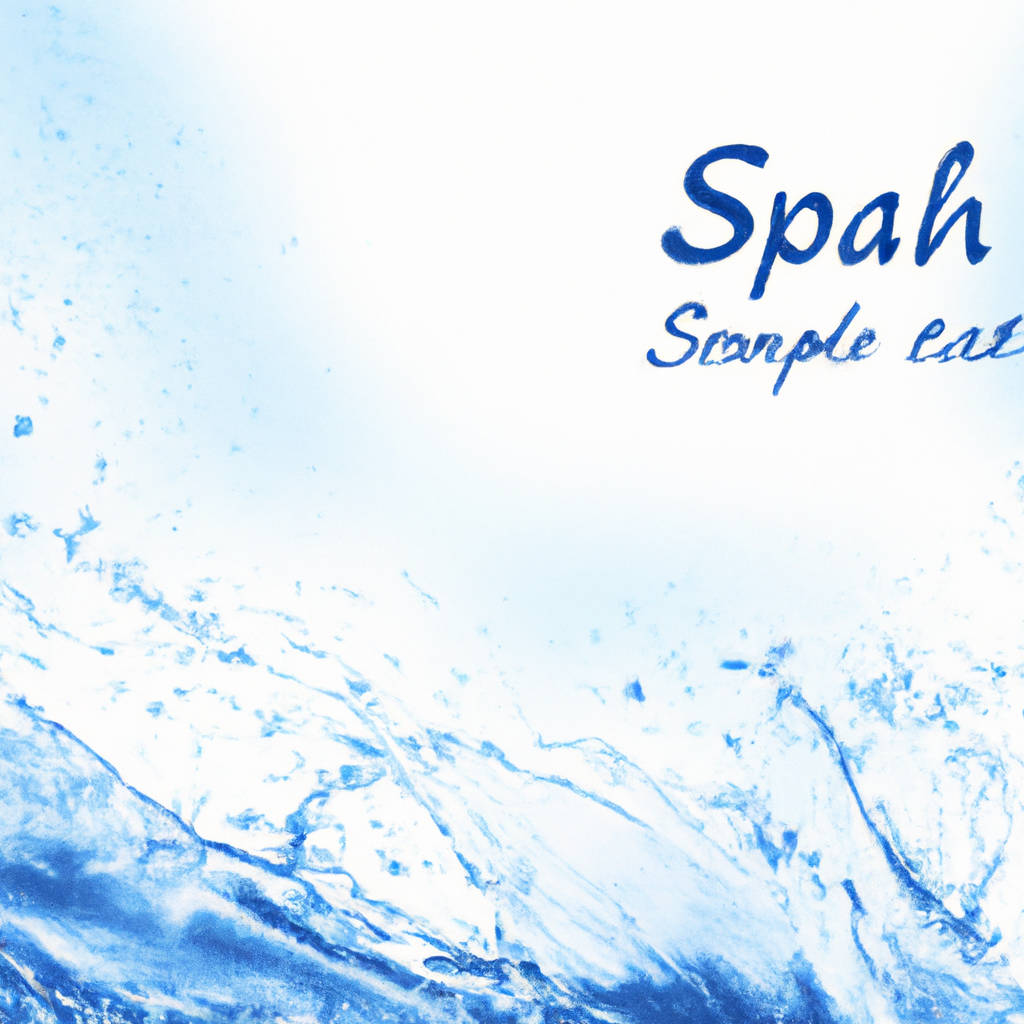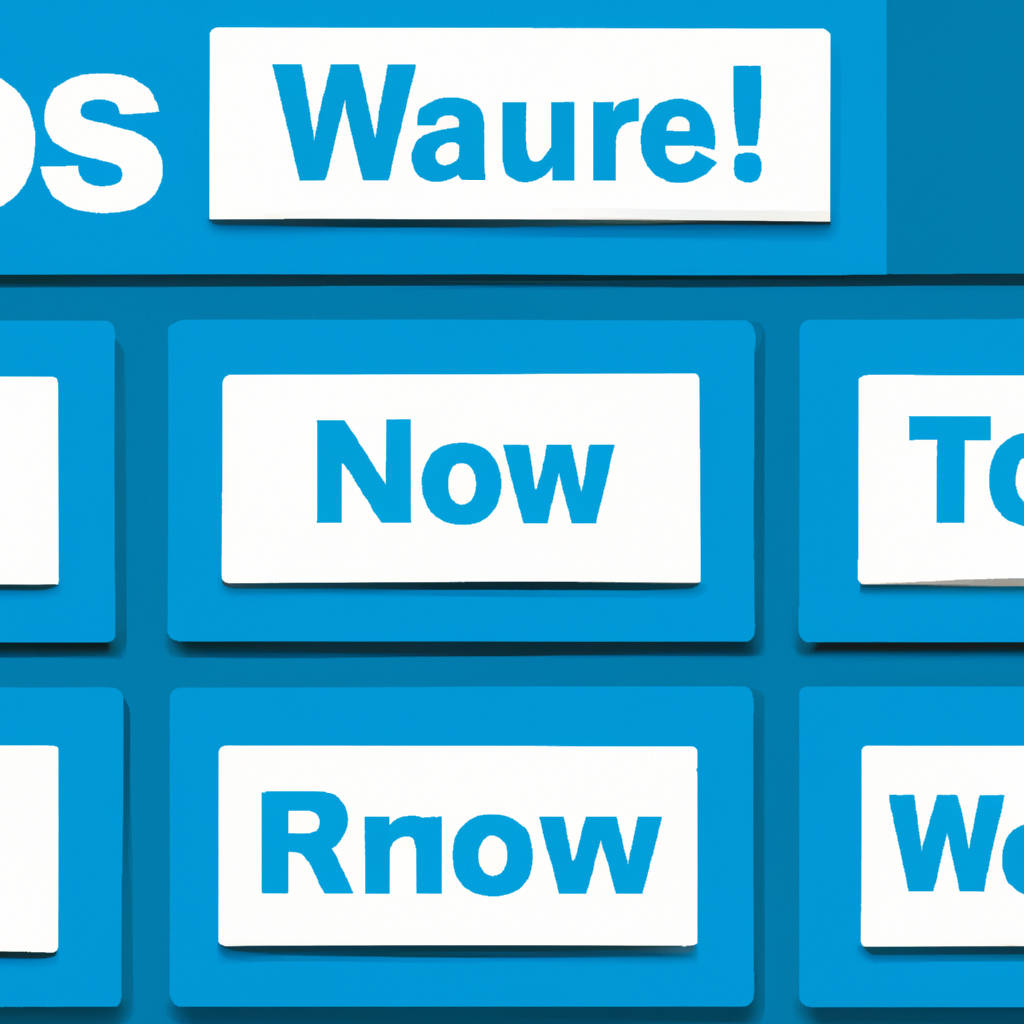Crafting an impactful splash page requires a blend of creativity, simplicity, and strategic thinking. The first tip is to ensure that the design is not only visually appealing but also resonates with your brand identity. Use high-quality images, compelling typography, and colors that align with your brand’s theme. Secondly, it should be simple.
Avoid cluttering the page with too much information or excessive design elements. The goal is to grab the user’s attention immediately and guide them towards the desired action, whether it’s signing up for a newsletter or making a purchase. Another important aspect is optimizing the splash page for different devices.
With more people accessing the internet through mobile devices, having a responsive design is crucial. Lastly, remember to include a clear and compelling call-to-action. This is the part that encourages visitors to take the next step, so make it stand out. Employ A/B testing to determine what works best for your audience. Through these practices, you can create a splash page that not only captures attention but also drives conversions.

What’s a Splash Page?
A splash page refers to a web page that users see before they can access the main content of a website. This introductory page often showcases the website’s aesthetic and communicates its overall theme or purpose. It’s essentially a welcome screen that aims to engage visitors, often including visually appealing graphics, compelling messages, or calls to action. The primary role of a splash page is to capture the visitors’ attention, convey vital information, or guide them on what steps to take next.
These pages can serve various functions such as collecting visitor information, advertising a special offer, or promoting a new product or service. Despite the extra click required to reach the main content, if designed effectively, a splash page can significantly enhance user engagement and overall user experience. However, it’s critical to ensure it doesn’t become a hindrance to the user’s access to the website’s main content. Therefore, the design of a splash page should be simple, intuitive, and easy to navigate, often including a clear option to skip and proceed to the main page.
Consequently, a well-constructed splash page can be a powerful tool for businesses to create a favorable first impression, stimulate user interest, and drive specific actions. Moreover, they can serve as a useful platform for marketers to gauge user behavior data and improve their strategies based on these insights. However, it’s essential to use splash pages judiciously as excessive or improper use could potentially distract or annoy users, affecting the website’s traffic and performance negatively.
Splash Page Samples
Splash pages are the first point of interaction between your audience and your website. Thus, it is essential to ensure they are designed effectively to encourage further exploration of your site. Various samples of splash pages can be found across the internet, each with different styles, colors, and designs. Some of these are minimalistic, with straightforward text and a single call to action, while others are more elaborate, featuring rich multimedia content and interactive elements.
For instance, some splash page samples employ vivid, high-quality images or videos as their background to immediately capture the visitor’s attention. Others use captivating animations or parallax scrolling to create an immersive, engaging experience. The content on these pages can range from a simple company logo and tagline to more detailed information about the brand and its offerings.
Another popular format for splash pages includes a brief form for visitors to fill out, usually to subscribe to a newsletter or to access a particular service. This is an effective method of gathering valuable user data while also cultivating potential leads.
There are also splash page samples that are more experimental and innovative, using unique layouts, unconventional typography, and daring color schemes to make a bold statement. These types of splash pages may not always adhere to traditional design principles, but they can offer a refreshing break from the norm and help a brand stand out from the competition.
Regardless of the specific design, an effective splash page should be visually appealing, user-friendly, and aligned with the overall brand image. It should immediately convey the value proposition of the website and inspire the visitor to delve deeper. Looking at various splash page samples can provide valuable inspiration and insights for creating a compelling and successful splash page.

Pretty Olive Interiors
Pretty Olive Interiors is an exceptional interior design firm known for its elegant and distinctive style. They are highly committed to creating spaces that reflect the individual tastes and lifestyles of their clients. With an affinity for balancing both function and aesthetics, Pretty Olive Interiors is renowned for transforming simple spaces into stunning environments.
Their portfolio spans a wide range of styles from contemporary to traditional, each project showcasing a unique fusion of colors, textures, and materials. Renowned for their attention to detail, the designers at Pretty Olive Interiors integrate elements of light, space, and nature to develop cohesive designs that harmonize with the surrounding environment. The firm’s approach is characterized by a sophisticated use of color, often gravitating towards the muted earth tones that give them their name.
From sleek minimalistic designs to opulent, luxurious spaces, Pretty Olive Interiors excels in bringing out the hidden potential in every room. They believe that the environment we live in greatly influences our mood and behavior, and hence, prioritize creating spaces that are both beautiful and comfortable. The designers at Pretty Olive Interiors work tirelessly to ensure each project is a true reflection of their client’s personality and lifestyle, resulting in spaces that are as unique as the people who inhabit them. With their commitment to exceptional design and customer satisfaction, Pretty Olive Interiors continues to set the bar high in the world of interior design.
Inspire Organics
Inspire Organics is a conscientious company that is dedicated to promoting health and wellness through its range of organic products. Their offerings, which include nutrient-rich superfoods and plant-based protein powders, are crafted with the utmost care and precision, ensuring that each item is free from harmful substances such as pesticides, herbicides, and GMOs.
The team at Inspire Organics believes in the power of nature and its ability to nourish and heal the human body, which is why they are committed to sourcing only the finest organic ingredients. Every decision made is with the customer’s wellbeing in mind, from the selection of raw materials to the careful formulation of each product. The philosophy at Inspire Organics is grounded in the belief that maintaining health should not be complicated, and that nature provides all the necessary tools to achieve optimal wellness.
Therefore, their range of products is designed to be easily incorporated into any lifestyle, providing a simple and convenient way to boost nutritional intake and overall wellbeing. Through their steadfast commitment to quality and health, Inspire Organics is making a positive impact on the lives of their customers, empowering them to take control of their health and live their best life.
Fighting Pretty
Fighting Pretty is a unique concept that explores the intersection of beauty and resilience, particularly in the context of health battles. It is predominantly used in reference to women battling health issues, most notably cancer. The phrase emanates from the belief that no matter the struggles one is going through, they have the capacity to retain their grace, dignity, and beauty. It is about maintaining a positive outlook and a certain level of elegance even in the face of adversity. This idea has been popularized by non-profit organizations that provide care packages filled with cosmetics and supportive messages to women undergoing treatment, as a way to boost their self-esteem and empower them.
These organizations champion the concept of Fighting Pretty, encouraging women to not only confront their health challenges head-on but also to do it while feeling confident and beautiful. The concept of Fighting Pretty has been a source of inspiration for many, promoting the idea that strength and beauty can coexist, and that one’s physical appearance doesn’t define their ability to fight or their strength of character. It advocates for the empowerment of women, serving as a reminder that they are more than their illnesses and that they can face any hardship with both courage and elegance. The concept of Fighting Pretty is a testament to the power of a positive mindset and the strength of the human spirit.
Splash Page Characteristics
Splash pages are typically the first page a user sees when visiting a website. They are designed to capture the viewer’s attention with visually appealing graphics and succinct messaging. The primary function of a splash page is to provide users with critical information about the site or company, often including a clear call-to-action such as “Learn More” or “Shop Now.”
In terms of design, splash pages are often simple and uncluttered to ensure that the user’s attention is drawn to the central message or action. They may incorporate rich media like video or animations to engage the user and create a memorable first impression. Some splash pages may also feature audio clips, although this can be a divisive design choice due to different user preferences.
One critical characteristic of splash pages is their temporary nature. Unlike homepages, which remain relatively stable, splash pages can be updated or changed frequently to reflect current promotions, campaigns, or news. This makes them an excellent tool for businesses to highlight specific products, services, or events.
While splash pages can be an effective tool for capturing user attention, it’s essential to ensure they don’t hinder the user’s journey through the website. Therefore, most splash pages include an option to bypass the page and go directly to the main content. This ensures that users who prefer to skip the splash page aren’t frustrated or turned away.
In conclusion, splash pages are characterized by their visually engaging design, concise messaging, and temporary nature. They serve as a valuable tool for companies to grab the user’s attention and guide them towards a specific action or piece of information. However, to maintain user satisfaction, it’s crucial that these pages don’t obstruct the user’s navigation of the site.

Why Make a Splash Page?
A splash page is a crucial tool for digital marketing and website optimization. It serves as the introductory screen that users encounter before accessing the main website content. Its primary aim is to capture the attention of the site visitors, providing them with crucial information about the website or company, or prompting them to take a specific action – such as signing up for a newsletter, purchasing a product, or participating in a promotion. The use of splash pages offers numerous benefits.
Firstly, it enhances the user experience by giving a preview of what to expect from the website, thereby increasing the chances of engagement. Secondly, a well-designed splash page can significantly boost the website’s SEO ranking, as it provides an opportunity to incorporate relevant keywords and backlinks. Thirdly, it serves as an effective platform for data collection. By encouraging users to sign up for newsletters or promotions, businesses can easily gather valuable customer data for further marketing strategies. Lastly, splash pages can be instrumental in promoting new products or services, special offers, or important events. It allows businesses to communicate these updates instantly to their site visitors, increasing the likelihood of positive responses.
However, it’s important to note that the effectiveness of a splash page largely depends on its design and content. An overly complicated or cluttered splash page may deter users from exploring further. Therefore, it should be simple, visually appealing, and convey the message clearly and concisely. To sum up, a splash page can be a powerful weapon in a digital marketer’s arsenal, provided it is used wisely and strategically.
Attract Customers
Attracting customers is a fundamental aspect for any business aiming to expand its reach and elevate its profitability. It involves a myriad of strategies and techniques, each tailored to suit the unique preferences and behaviors of the targeted clientele. One effective approach is to offer exceptional customer service. This not only ensures a satisfied customer base but also enhances the likelihood of positive word-of-mouth, which can attract more customers.
The use of marketing tactics such as email campaigns, social media advertisements, and promotional offers also play a crucial role in attracting potential clients. In this digital age, having a strong online presence is vital. Businesses must optimize their websites for SEO and regularly post engaging content to draw in more web traffic. Additionally, it’s essential to understand the needs and wants of the customer. By conducting market research and surveys, businesses can gain valuable insights into what their customers desire, allowing them to cater to those needs accordingly.
Furthermore, businesses may consider partnerships with other companies or influencers to increase their visibility and reach a wider audience. Lastly, providing high-quality products or services that surpass customer expectations is arguably the most effective way to attract and retain customers. The bottom line is, every business should strive to create a customer-centric environment that not only meets but far exceeds customer expectations, as this is the surest way to attract and keep a loyal customer base.

Promote Events
Promoting events is a critical aspect in ensuring their success. The aim is to attract as many people as possible, thereby amplifying the event’s impact. This process involves a series of steps, including creating a comprehensive promotion plan, leveraging different marketing channels, and engaging potential attendees. A compelling event promotion strategy may include a robust online presence, enticing visuals, and captivating text that communicates the value and excitement of the event. Social media platforms like Facebook, Instagram, and Twitter, are excellent tools for spreading the word about an event.
They allow organizers to reach a broad audience and engage them with interactive content. Email marketing is another effective strategy, allowing you to send personalized invites and updates to a targeted group. Traditional methods like flyers, posters, and word-of-mouth also play an essential role, especially for local events. The use of influencers or celebrities can also boost event visibility and appeal. Regardless of the methods used, it’s crucial to clearly communicate the event’s details, purpose, and benefits to attract attendees. A compelling call-to-action is also key, encouraging potential attendees to register or buy tickets.
Analyzing the effectiveness of different promotion strategies and adjusting them as necessary can also help optimize efforts and ensure maximum outreach. Ultimately, the goal of promoting events is to create awareness, generate excitement, and encourage participation, contributing to the overall success of the event.
Restrict Website Access
Website access restriction is a prevalent topic in both the corporate and educational sectors, as well as within homes, signifying its widespread relevance and importance. This pertains to limiting the availability of certain online content to specific users, either through blocking certain sites entirely or by limiting when they can be accessed. This is often implemented by system administrators in an effort to maintain productivity, security, or ethical standards.
For instance, in a business setting, management might restrict access to social media platforms during office hours to ensure that employees stay focused on their tasks. Similarly, educational institutions might restrict access to certain websites to ensure that students concentrate on their academic work and don’t get distracted by irrelevant content. At home, parents might restrict access to certain websites to shield their children from inappropriate material. While this measure certainly comes with its advantages, it also sparks debates about censorship and personal freedom, as some argue that it infringes on a person’s right to access information freely.
However, it’s worth noting that the implementation of such restrictions is often out of necessity rather than an attempt to limit freedom, particularly when it comes to ensuring security and promoting a conducive work or learning environment. It’s a complex topic that requires a careful balance of rights, responsibilities, and practical needs.

Splash Page Best Practices
Splash pages, when used effectively, can significantly enhance a website’s user experience and engagement. A splash page is the first page that visitors see before they access the main website content. It often contains a brief message, a captivating image or animation, and a call to action. To utilize splash pages optimally, several practices should be adhered to. Firstly, they should be simple and concise, presenting only necessary information to the visitor.
Overloading the page with too many elements can lead to confusion and may discourage users from proceeding further into the website. Secondly, splash pages should have a clear and compelling call to action, guiding visitors to the next step, whether it’s subscribing, purchasing, or simply entering the site. Thirdly, the design of the splash page should be visually appealing and consistent with the overall brand aesthetic. This helps to create a positive first impression and reinforces brand identity.
Furthermore, an option to skip the splash page is often appreciated by return visitors who already know what they want from the website. Lastly, it’s crucial to regularly assess the effectiveness of the splash page through analytics. Monitoring metrics such as bounce rates and conversions can provide valuable insights into what works and what needs to be improved. Following these practices can maximize the potential of splash pages, making them a powerful tool for enhancing website performance and user engagement.
1. Clean Design
Clean design refers to the aesthetic style that prioritizes simplicity and functionality in web and graphic design. This approach is characterized by the use of minimal elements, thoughtful typography, and ample white space. It focuses on delivering clear messages and smooth user experiences by eliminating unnecessary distractions and clutter. Clean design is perceived as modern and professional, often chosen by brands looking for a mature and straightforward identity.
The use of flat design techniques, such as simple iconography and limited color schemes, is a common feature of this style. The key principle of clean design is to communicate effectively rather than just to impress. The content should be easy to comprehend, and the visual hierarchy should guide the viewer’s gaze to the most important elements. This design philosophy also emphasizes the importance of functionality and usability. Every design element should serve a purpose. It should either enhance the user experience or convey a part of the message. In clean design, there’s no room for decorations or elements that are purely ornamental.
Therefore, this design style is often employed in user interface (UI) and user experience (UX) design, where clarity and ease of use are paramount. The clean design approach also extends to the use of colors, with designers usually opting for a limited and neutral color palette to maintain a clean and uncluttered appearance. The result is a visual layout that is not only pleasing to the eye but also enhances the overall user experience.

2. Actionable Copy
Actionable copy plays a critical role in the field of marketing and advertising, where it is used to persuade potential customers to take a desired action. Whether it’s to make a purchase, sign up for a newsletter, or share a post on social media, the ultimate goal of actionable copy is conversion. It is not enough to simply inform or entertain; actionable copy must inspire, motivate, and convince. It should be clear, concise, and compelling, with a strong call-to-action (CTA) that leaves no doubt in the reader’s mind what they are being asked to do.
The power of actionable copy lies in its ability to evoke emotion, create a sense of urgency, and establish trust. It employs persuasive techniques such as scarcity (“limited time offer”), exclusivity (“members only”), or social proof (“join thousands of satisfied customers”). It is also important for actionable copy to be customer-centric, focusing on the benefits the customer will gain and addressing any potential objections they may have. In essence, actionable copy is a strategic tool that, when used effectively, can significantly enhance the success of marketing and advertising campaigns.
3. Clear Call to Action
A clear Call to Action (CTA) serves as a vital component in any marketing strategy, holding the power to guide your audience towards the desired outcome. Regardless of whether your aim is to increase subscriptions, drive traffic to your blog, or boost product sales, an effective CTA can be the key to unlocking these results. But what exactly constitutes a clear CTA? Essentially, it’s a concise statement that directly encourages your audience to take a specific action. It’s not just about making a request; it’s about making it in a manner that is compelling and engaging.
It should be visually striking, strategically placed, and convey a sense of urgency that prompts immediate action. Moreover, it should be paired with an offer or incentive that is of genuine value to the audience. The ultimate goal of a clear CTA is to make your audience feel they’re not just being sold to, but that they’re gaining something in return. When executed correctly, a clear CTA can significantly improve conversion rates and foster a stronger connection between your brand and its audience. Remember, your audience will not take action unless they are motivated to do so. Therefore, it’s crucial to design your CTA in a way that not only captures attention but also incites action.

4. Maintain Consistency
Maintaining consistency is a critical factor in achieving long-term goals, whether it’s in personal life, work, or any other aspect of human endeavor. The concept of consistency can be defined as the sustained application of effort to ensure the continuity of a task or behavior over time. It is the ability to remain steadfast and unfaltering in your actions, regardless of the circumstances. When you commit to consistency, you create a pattern of success that reinforces itself. It involves making a promise to yourself and keeping it, which is essential for building self-trust and self-confidence.
Consistency also plays a crucial role in establishing your reputation; when you consistently deliver quality work or uphold your standards, people begin to trust and rely on you. The challenge for many is that consistency requires discipline, focus, and perseverance, which can be difficult to maintain, particularly when facing obstacles or setbacks. However, those who can cultivate and sustain this trait often find that it becomes a key driver for their success. It enables you to keep moving forward, even when progress seems slow or the path ahead uncertain. By maintaining consistency, you can gradually build momentum and ultimately reach your desired goals. Remember, consistency is not about being perfect; it’s about making steady, incremental improvements over time. It may not always be easy, but it’s always worth the effort.
5. Add Subscription Form
Adding a subscription form to your website is a strategic move that can greatly enhance your business’s reach and engagement. This approach can help you to build a reliable and sizable email list, which is an essential tool for effective communication with your audience. A subscription form is often a simple and unobtrusive feature that requests site visitors to provide their email addresses for updates or newsletters. It serves as a direct line to your audience, allowing you to send them personalized content, updates, and special offers.
By incorporating a subscription form on your website, you are creating an opportunity for potential customers to connect with your brand on a deeper level, which could lead to increased loyalty and conversion rates. While designing your subscription form, ensure it is user-friendly, visually appealing, and prominently placed for maximum visibility. Provide clear information on what subscribers can expect to receive and how often. Remember to make the subscription process as straightforward as possible.
A complex or long-winded process could discourage potential subscribers. Also, ensure privacy and data protection measures are in place as these are critical to earning your subscribers’ trust. Lastly, consider offering incentives for subscriptions, such as exclusive content or discounts, to encourage more sign-ups. A well-implemented subscription form can significantly contribute to your business’s growth and success.
